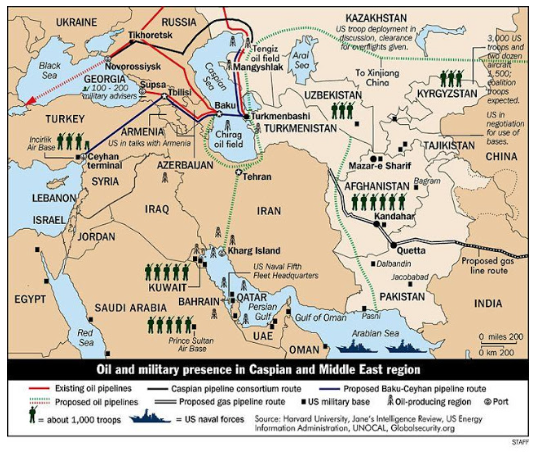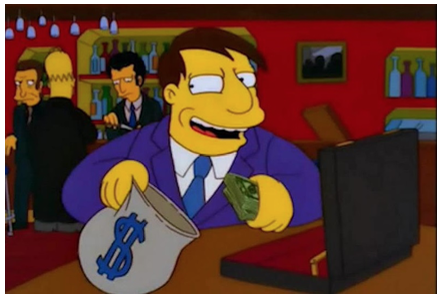CommentsPLATKIN ON PLANNING-Like clockwork, each week brings forth another alarming scientific study reporting that global warming and climate disruption is accelerating.
These studies include the ominous November 2018 National Climate Assessment, issued by 13 Federal agencies, and the UN’s Intergovernmental Panel on Climate Change October 2018 Special Report.
These studies’ worst-case scenarios are turning out to be the most accurate, such as mass extinctions and the creation of a new geological epoch, the anthropocene. Under these reports’ lowest carbon scenarios, by 2090 the United States will nevertheless spend between $100–200 billion per year to counter to such climate-linked havoc as:
- Mega-droughts.
- Severe storms and floods.
- Sea level rise.
- Heat waves.
- Wild fires.
- Invasive animal and plant species filling new ecological niches.
- Reductions in agricultural production.
- Increased diseases and higher death rates.
- Climate-related wars and refugee flows.
One response to this worsening climate crisis is The Green New Deal. It originated with the Green Party, and has been adopted by progressive Democrats, such as New York State’s Alexandria Ocasio-Cortez. Modeled after FDR’s New Deal (1933-1941), it proposes extensive government programs to counter the generation of Green House Gases before global warming becomes irreversible.
But and this is critical, the New Green Deal also addresses the underlying economic causes of climate change. It departs from the vague concept of “human-caused” climate change to focus on those features of our economic system most responsible for climate change:
- According to the Guardian newspaper, 90 large companies, most in the business of extracting, selling, and burning fossil fuels, are responsible for nearly two-thirds of the Green House Gas emissions driving global warming.
- Military bases and conquests that parallel the location of major oil and natural gas fields, especially in the Middle East and North Africa.
- Transportation systems, especially trucks, cars, and planes, that are based on fossil fuel combustion and that prioritize profitability above climate protection.
- High levels of consumption in affluent countries, especially among their wealthier residents, who have a carbon footprint many times greater than their own poor and those who live in poorer countries.

Major principles of the Green New Deal. In action, the Green New Deal would use the power of the Federal Government to advance programs like the following, some similar to the original New Deal’s Works Project Administration (WPA) and Civilian Conservation Corp (CCC):
- An immediate transition from fossil fuels and nuclear energy to renewable energy: solar, wind, tides, and geo-thermal.
- An end to oil and gas extraction.
- Extensive planting of trees, based on local ecology and changes in temperature and precipitation guiding species selection. (The CCC, which planted three billion trees in the 1930s, offers a precedent.)
- Green jobs to build new, low-carbon infrastructure and install renewable energy equipment.
- Eliminating Green House Gas generation from agriculture.
- Alternative banking system to fund green infrastructure projects.
- Free education, from pre-school through college.
- Single payer health insurance, also called Medicare-for-All.
The Green New Deal will be expensive, but its advocates maintain that the financial resources are there if the Federal re-prioritizes its budget by:
- Shutting down foreign military bases and most new weapon systems, including $1 trillion allocated for upgraded nuclear bombs.
- Eliminating subsidies and tax breaks for fossil fuel industries.
LA City Hall’s version of the Green New Deal
To understand City Hall’s alternative Green New Deal, we need to catalog the sins of commission and omission regarding climate change that pervade its institutional culture.
The sins of commission are linked to City Hall’s widespread pay-to-play practices. Based on the latest FBI and Department of Justice probes of the Los Angeles City Council and Mayoral appointees, it has become so pervasive that it can no longer stay under wraps. There are just too many officials who have reached out when waves of cash (the other “green”) flow past and often into their hands.
As explained in a recent Los Angeles Times editorial:
“How can anyone who has followed City Hall politics and development be surprised that there’s a corruption investigation underway? The unwritten understanding in Los Angeles is that City Council districts are like fiefdoms, over which council members have sole discretion to make real estate development decisions, including whether a project gets an exemption from zoning and land-use rules, or whether it should be granted a tax break.”
In LA this other Green New Deal is built on three levels of corruption, all of which worsen the growing climate crisis by ignoring what is already happening in Los Angeles and how the City of Los Angeles ought to respond.
High-level corruption: Land use ordinances – some drafted off-site by shadowy private sector lawyers -- that benefit real estate investors at the expense of the climate and the public. These include Community Plan implementation ordinances and new Specific Plans, especially “transit neighborhood plans” that grant owners of commercial property free up-zones. Once adopted through ordinances, these permanent gifts allow owners to flip their long-held properties for sizable amounts of crisp, green bills. Furthermore, if the property owners and developers eventually decide to build, their future projects will be “by-right.” They will no longer require expensive, time-consuming zoning waivers and environmental reviews.
Another popular gimmick is called density bonuses, especially Transit Oriented Communities Guidelines (TOC). This law, ushered in by Measure JJJ, allows the height, mass, and density of residential buildings to be shoved upward in perpetuity, without public notification or an effective right of appeal. Property owners only need to promise that about 10 percent of their rental units will be set aside for low-income tenants. Then, quite conveniently, no City employee ever drops by to ensure that these pledged units charge affordable rents and house certified low-income tenants.

Mid-level corruption: City Hall’s pay-to-play culture of approving otherwise illegal projects. In pay-to-play cases, developers must apply for discretionary approvals because their projects cannot be built “by-right.” They require zone changes, zone variances, conditional use permits, and/or other discretionary approvals. Luckily for the developers, a combination of City Hall permissiveness, augmented by the intervention of elected officials, ensures that decision makers grant 90 percent of all discretionary requests. Pay-to-play works like a charm, without any evidence that the impacts of these over-sized projects on climate change are ever considered. Even when projects require Environmental Impact Reports, the City Planning Commission and the City Council never approve the EIRs’ environmentally superior alternatives.
Low-level corruption: Lax code enforcement. Violations of the Zoning Code and Building Code abound in Los Angeles and since the Department of Building and Safety (LADBS) only sporadically responds to code violation complaints, most violations are never caught, never reported, never cited, never prosecuted, and never reversed. Sometimes, the public attributes this to a City Department that is over-worked, under-staffed, and therefore subject to mistakes in interpreting new, complicated zoning ordinances. While plausible, this explanation cannot account for one troublesome fact: the mistakes and lax code enforcement always benefit developers. Neighborhood activists have yet to spot a case where LADBS mistakes incorrectly reduced the size, height, or density of a private project.
Do these “mistakes” result from under-the-table payments to building inspectors, once called bribes and corruption? Sympathy for contractors from LADBS building inspectors who previously worked in the construction industry? Winks and nods from elected officials, managers, and supervisors intent on creating a “business-friendly” City Hall? Maybe another FBI investigation of LADBS will finally give us some answers?
Sins of Climate Omission: The local media has covered some sins of commission but ignores climate-related sins of omission. They include the following, although shrinking the urban forest, creating administrative barriers to rooftop solar, and under-funding sidewalk repairs should also be added.
- Eric Garcetti’s office has buried Mayor Villaraigosa’s mitigation-focused 2007 Climate Action Plan. Garcetti’s replacement pLAn also prioritizes mitigation but has been sidelined since 2016. The Mayor’s new focus is resilience, a phrase that means accepting and then adapting to the consequences of global warming. This new approach is presented through a slick, multi-colored document, Resilient Los Angeles that few Angelinos have read.
- While the pLAn and Resilient Los Angeles executive documents languish in the Mayor’s Office, the Governors Office of Planning and Research has prepared and published detailed climate goals, directions for using the California Environmental Quality Act to combat climate change, and on-line guidelines for cities and counties to add a Climate Change element to their General Plans. The critical difference between the latter and the Mayor’s two executive documents is that the City Charter mandates a General Plan and its elements (chapters) require public meetings, public hearings, Environmental Impact Reports, and presentations to and votes by the City Planning Commission and the City Council. When implemented, they also lead to ordinances, funded public improvements, budget allocations, and departmental work programs.
The combined sins of climate change commission and omission mean that our City Hall’s commitment to real estate development has become their de facto, alternative Green New Deal. Unlike the Green New Deal widely discussed in the media and which would allocate hundreds of billions for many new Federal climate programs, LA’s alternative Green New Deal is built on the three levels of corruption explained above.
Could Los Angeles have a local version of the real Green New Deal instead of the sleazy alternative now under FBI investigation? Yes, but it must arise from LA’s neighborhoods and grass roots organizations. If we wait for a City Hall climate epiphany, based on the latest climate science reports, it will be too late.
(Dick Platkin is a former Los Angeles city planner who reports on planning issues for CityWatch. Please send your comments, corrections, and questions to [email protected].) Prepped for CityWatch by Linda Abrams.















